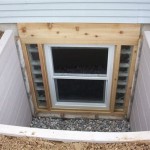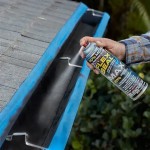Best Way to Dry Out A Flooded Basement
A flooded basement presents a significant challenge to homeowners, requiring immediate and effective action to mitigate damage and prevent the proliferation of mold and other harmful microorganisms. Properly drying a flooded basement involves a multi-stage process encompassing water removal, structural drying, and sanitation. The effectiveness of each stage is critical to ensuring a safe and habitable environment. Speed and precision are paramount as standing water and elevated humidity levels create breeding grounds for mold within 24 to 48 hours.
The initial assessment of the flood damage is crucial. This involves identifying the source of the flooding, determining the extent of water penetration, and documenting damaged items for insurance purposes. Safety should be the primary concern during this assessment. Before entering the flooded basement, it is essential to ensure that the electricity is turned off to prevent electrocution. Standing water can conduct electricity, posing a severe risk. Wearing protective gear, including rubber boots, gloves, and potentially a respirator, is also recommended to minimize exposure to contaminants that may be present in the floodwater. These contaminants can include sewage, chemicals, and bacteria, which can pose serious health risks.
Once the initial assessment is complete and safety measures are in place, the process of water removal can begin. The method used for water removal will depend on the depth of the water and the available resources. For minor flooding, involving only a few inches of water, pumps, wet/dry vacuums, and manual extraction methods like mops and buckets may be sufficient. However, for significant flooding, professional-grade submersible pumps are necessary to expedite the process. These pumps are designed to handle large volumes of water quickly and efficiently. Regardless of the method used, it is essential to remove as much standing water as possible before proceeding to the next stage of the drying process.
After water removal, the focus shifts to structural drying. This involves removing moisture from the building materials, including walls, floors, and ceilings. This is a more complex process than simple water removal, requiring specialized equipment and techniques. The primary goal of structural drying is to reduce the moisture content of the building materials to acceptable levels, preventing mold growth and structural damage. Dehumidifiers and air movers are essential tools in this phase.
Employing Dehumidification Techniques
Dehumidifiers work by removing moisture from the air, creating a drier environment that encourages evaporation from wet surfaces. There are two main types of dehumidifiers: refrigerant dehumidifiers and desiccant dehumidifiers. Refrigerant dehumidifiers are more energy-efficient in warmer temperatures, while desiccant dehumidifiers are more effective in cooler environments. Selecting the appropriate type of dehumidifier depends on the ambient temperature and humidity levels in the basement. The size and number of dehumidifiers required will depend on the size of the basement and the extent of water damage. It is important to choose dehumidifiers with sufficient capacity to effectively lower the humidity levels. Regular emptying of the dehumidifier is also necessary to ensure continuous operation.
Air movers, also known as industrial fans, are used to circulate air and promote evaporation. By directing airflow across wet surfaces, air movers accelerate the drying process. Strategic placement of air movers is crucial for effective drying. They should be positioned to create airflow across walls, floors, and other surfaces that have been affected by water. Air movers should be run continuously until the humidity levels in the basement have returned to normal. Monitoring humidity levels with a hygrometer is recommended to track progress and ensure that the drying process is effective. Proper ventilation is also important during this phase. Opening windows and doors, when possible and safe, can help to remove moisture-laden air and introduce fresh air into the basement. However, it is important to avoid introducing excessive humidity from the outside, which can hinder the drying process.
During the structural drying phase, it is also important to remove any wet or damaged materials that cannot be salvaged. This may include carpeting, padding, drywall, and insulation. These materials can harbor moisture and provide a breeding ground for mold. Removing them allows for more effective drying of the underlying structure. It is important to dispose of these materials properly, following local regulations for waste disposal. In some cases, it may be necessary to hire a professional to remove and dispose of contaminated materials.
Disinfection and Sanitation Protocols
Once the structural drying is complete, the next step is disinfection and sanitation. Floodwater can contain harmful bacteria, viruses, and other microorganisms that can pose health risks. Thorough cleaning and disinfection are essential to eliminate these contaminants and create a safe environment. The specific cleaning and disinfection methods will depend on the type of contaminants present and the materials that have been affected. In general, it is recommended to use a disinfectant that is effective against a broad range of microorganisms. Follow the manufacturer's instructions carefully when using disinfectants, paying attention to the recommended dilution ratios and contact times. Wearing appropriate personal protective equipment, such as gloves and eye protection, is also essential during the disinfection process.
Hard surfaces, such as concrete floors and walls, can be cleaned with a solution of bleach and water. However, it is important to use bleach cautiously, as it can damage some materials and release harmful fumes. Always test the bleach solution on an inconspicuous area first to ensure that it does not cause discoloration or damage. Porous materials, such as wood and drywall, may be more difficult to disinfect and may require more aggressive cleaning methods. In some cases, it may be necessary to hire a professional to clean and disinfect these materials. After cleaning and disinfecting, it is important to thoroughly rinse the surfaces with clean water to remove any residual chemicals. Allow the surfaces to air dry completely before replacing any salvaged items.
In addition to cleaning and disinfecting, it is also important to address any lingering odors. Floodwater can leave behind unpleasant odors that can be difficult to eliminate. Air fresheners and odor absorbers can help to mask these odors, but they do not eliminate the source of the problem. A more effective approach is to use an ozone generator or a hydroxyl generator. These devices produce ozone or hydroxyl radicals, which oxidize and neutralize odor-causing molecules. However, it is important to use these devices cautiously, as ozone and hydroxyl radicals can be harmful to humans and pets. Follow the manufacturer's instructions carefully and ensure that the basement is well-ventilated during and after treatment.
Preventative Measures and Long-Term Strategies
After the basement has been dried, disinfected, and sanitized, it is important to take steps to prevent future flooding. This may involve addressing the underlying causes of the flooding, such as leaky pipes, poor drainage, or inadequate waterproofing. Regularly inspect the basement for signs of moisture and address any problems promptly. Consider installing a sump pump to remove water that accumulates in the basement. Ensure that the sump pump is properly maintained and tested regularly. Improve drainage around the foundation of the house to divert water away from the basement. This may involve grading the soil, installing French drains, or extending downspouts.
Apply a waterproof sealant to the interior walls of the basement to prevent water from seeping through the concrete. Install a vapor barrier under the flooring to prevent moisture from rising up from the ground. Use moisture-resistant materials when remodeling or renovating the basement. Avoid using carpeting or other materials that can easily absorb moisture. Consider installing a dehumidifier to maintain a low humidity level in the basement. Regularly monitor humidity levels and adjust the dehumidifier as needed. By taking these preventative measures, homeowners can significantly reduce the risk of future flooding and protect their property from water damage.
Documenting the entire drying process is crucial for insurance claims and future reference. This includes taking photographs and videos of the damage, keeping records of all expenses, and maintaining a log of all activities related to the drying process. This documentation will be helpful in filing an insurance claim and in proving that the drying process was properly completed. It is also a good idea to consult with a professional restoration company to assess the damage and develop a drying plan. A professional restoration company can provide valuable expertise and guidance and can help to ensure that the drying process is completed safely and effectively. They have the necessary equipment and training to handle even the most challenging flood situations. They can also provide documentation for insurance purposes and can help to negotiate with insurance companies.
Ultimately, the process of drying out a flooded basement is a complex and time-sensitive undertaking. By following these guidelines and taking the necessary precautions, homeowners can effectively mitigate damage, prevent mold growth, and restore their basements to a safe and habitable condition. Consulting with professionals and taking preventative measures are essential components of a comprehensive approach to flood damage restoration.

How To Dry A Wet Basement Bob Vila

How To Dry Out A Room After Leak Timberwise

How To Dry Out A Room After Flood And Water Damage Restoration

How To Dry Out A Wet Basement Fast 970 Services

Fast And Effective Ways To Dry A Basement After Flood Wikihow

3 Step Clean Up Plan After Your Basement Floods Waterproof Com
How To Dry A Flooded Basement Yourself

Fast And Effective Ways To Dry A Basement After Flood Wikihow

How To Clean A Flooded Basement News And Events For Systems Inc

Here S What To Do With Your Carpets After A Flood
Related Posts







